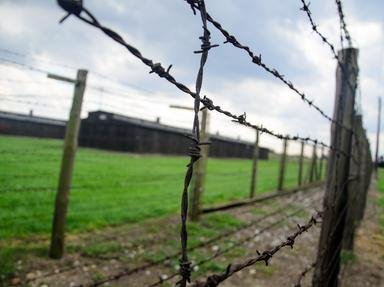Quiz Answer Key and Fun Facts
1. Without a doubt, the best-known victim of the Holocaust was Anne Frank, who spent a little over two years in hiding with her family and some friends in the annexe of an Amsterdam house. Miep Gies aided the family during those years, and kept them supplied with food and other necessities. What was Miep's relationship to the Franks prior to the war?
2. Oscar Schindler's remarkable rescue of Jews from the Holocaust has been chronicled in a book by Thomas Keneally and in a movie by Steven Spielberg. How was Schindler able to save the people on his "list"?
3. Raoul Wallenberg was the Swedish special envoy in Hungary during the Second World War, and issued false passports to Hungarian Jews in order to help them escape the Nazis. What became of Wallenberg?
4. Chiune Sugihara was a Japanese diplomat in Kovno, Lithuania, He issued thousands of transit permits in order to assist Jews in escaping from Lithuania. Sugihara issued these permits with the full backing of the Japanese government.
5. Irena Sendler is credited with saving the lives of 2,500 Jewish children in Poland during the Holocaust. From which dangerous location was Sendler able to remove the children?
6. No U.S. citizens have been honored by Yad Vashem as Righteous Gentiles.
7. Mefail and Njazi Bicaku were a Muslim father and brother, who hid and cared for 26 Jews during the Holocaust. What country did the Bicaku family come from?
8. In 1997, Kibbutz Lochemei HaGetaot (a kibbutz founded by Holocaust survivors and partisan fighters) hosted a meeting between Gentile rescuers and the Jews they had saved. Who were these rescuers?
9. Leonidis Panayotis and his son Giotas saved three young Jewish men from the Nazis in wartime Greece. Where were the young men from?
10. The village of Le Chambon-sur-Lignon in the Haute Lorraine section of France was a haven for Jewish refugees during the war. The villagers hid Jews who arrived in the village from all over France, and protected them at great risk to themselves. Who was responsible for inspiring this unusual community?
Source: Author
janetgool
This quiz was reviewed by FunTrivia editor
bloomsby before going online.
Any errors found in FunTrivia content are routinely corrected through our feedback system.

